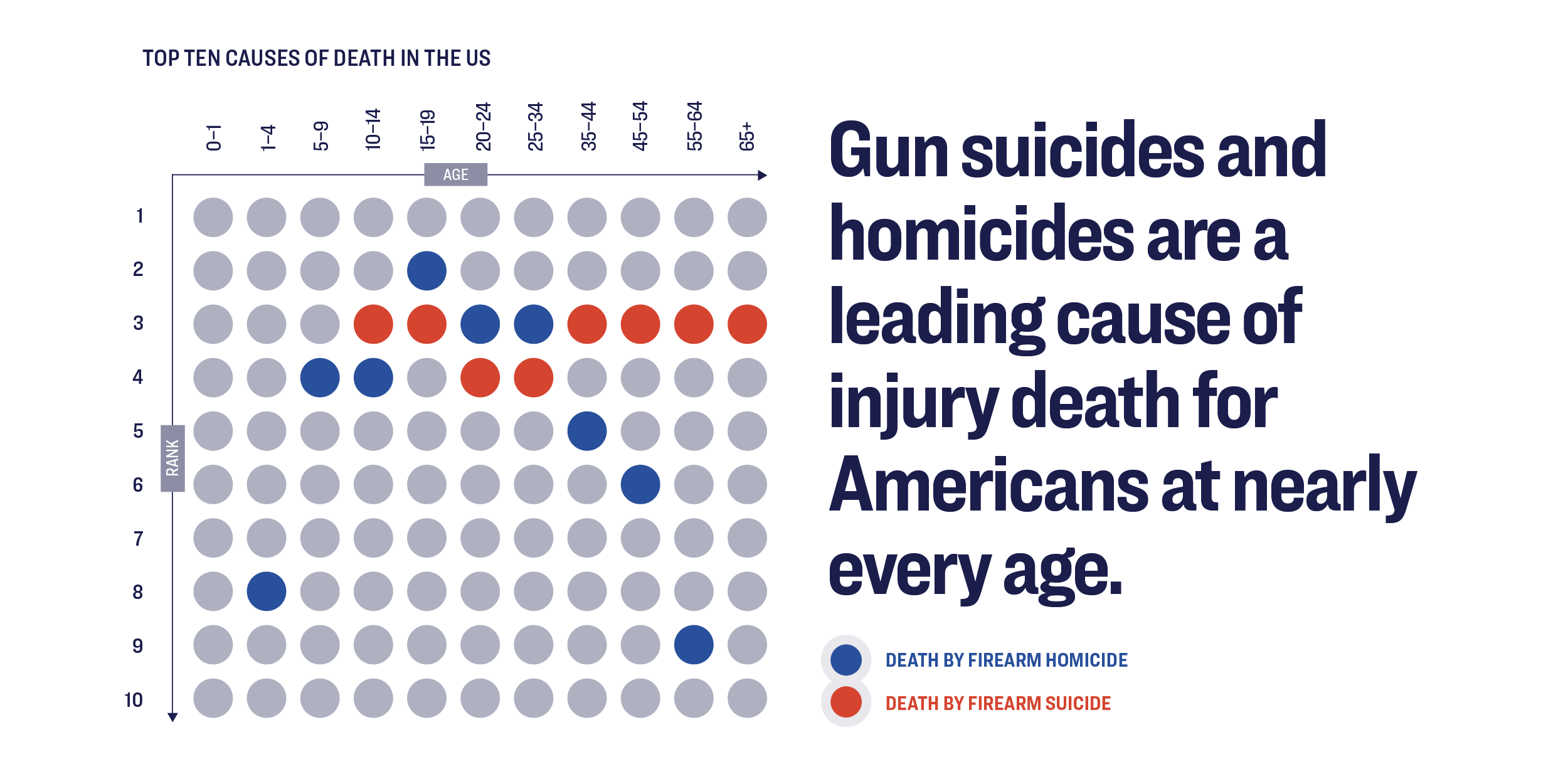
Confronting the Inevitability Myth: Saving Lives from Gun Suicide
How Data-Driven Gun Policies Save Lives from Suicide
Our report Confronting the Inevitability Myth: How Data-Driven Gun Policies Save Lives from Suicide represents the culmination of a yearlong project to research and analyze the suicide crisis. This report provides an in-depth examination of the deadly role guns play in suicide in America and outlines the policies and intervention programs that have been proven to help prevent these tragedies.
Though we are living in a time of rising suicide rates, many Americans, including our lawmakers, buy into the pervasive myth that suicides are inevitable. Confronting the Inevitability Myth thoroughly debunks this misconception by arming readers with data and research from across the field showing how gun access drives suicide risk in this country and, consequently, how effective gun policy and intervention programs can save more lives. A data supplement within the report takes an even deeper dive to show just how significantly guns contribute to state suicide rates: compared to all other variables, including race, gender, rurality, substance abuse, and severe mental illness, gun access correlates the most with suicide death.
As Confronting the Inevitability Myth shows, suicide’s impact is enormous. Since 2000, more than half a million Americans have died by suicide, and the majority used a gun. But these deaths aren’t spread equally across the nation—states with immediate, unrestricted access to guns suffer a hugely disproportionate number of our nation’s suicides. Because gunshots are so uniquely lethal, they account for 5% of suicide attempts, but are responsible for 50% of suicide deaths. A variety of risk factors—including mental health conditions and trauma, addiction and isolation, bullying and abuse—drive some people to attempt suicide. But easy access to guns is often the determining factor in whether a person at risk survives.

The good news is that there are many steps we can take today to address this public health crisis because the simple, hopeful truth is that these deaths are preventable. By addressing the primary factors that drive suicide risk, including access to guns, we can make a lifesaving difference for many Americans. Confronting the Inevitability Myth outlines six essential policy solutions that work to prevent suicide by reducing people’s access to guns during a suicidal crisis:
- Universal background checks help to keep severely suicidal people from acquiring guns after they have been involuntarily committed for their own safety.
- Extreme Risk Protection Order laws empower family members to proactively protect their loved ones by petitioning a court to temporarily remove guns during a severe mental health crisis.
- Voluntary gun relinquishment laws could help empower suicidal people to act to promote their own health and safety by limiting their access to guns during mental crises.
- Firearm waiting periods provide a brief but crucial cooling off period to guard against impulsive, suicidal gun purchases.
- Smart guns, safety training, and safe storage laws help keep children and teens from gaining unsupervised access to guns can meaningfully reduce youth suicide.
- Healthcare-based suicide prevention programs have shown that medical professionals make a remarkable difference in reducing their patients’ risk of suicide if they have the training, freedom, and support to effectively counsel their patients about gun safety.

These best practices chart a clear path to progress on this issue, and there’s no better time to act on them than now. The changes we recommend in this report are modest and—to be clear—they are entirely consistent with the Second Amendment. But by understanding and addressing the factors that drive suicide risk, we can save more lives.
MEDIA REQUESTS
Our experts can speak to the full spectrum of gun violence prevention issues. Have a question? Email us at media@giffords.org.
Contact